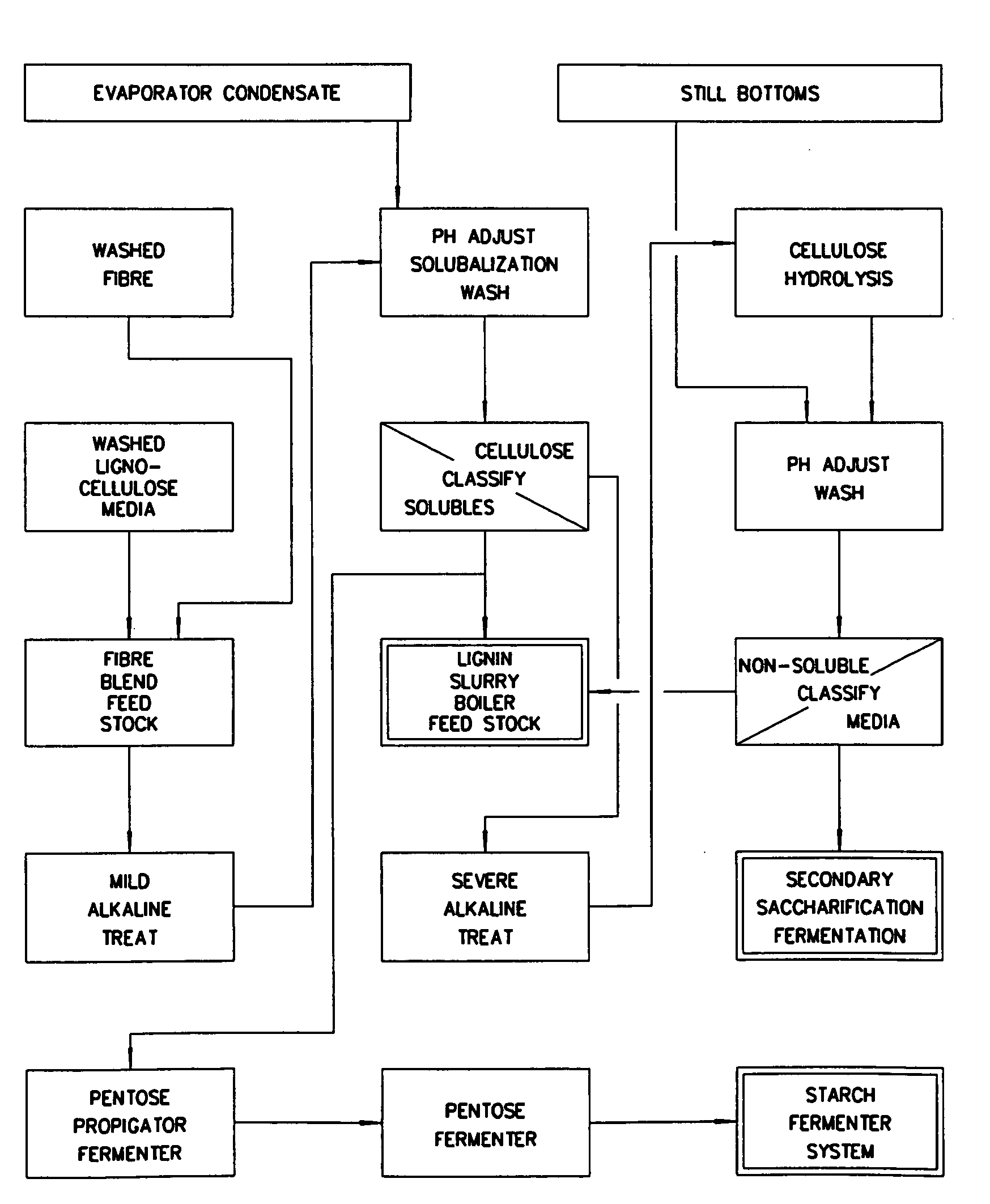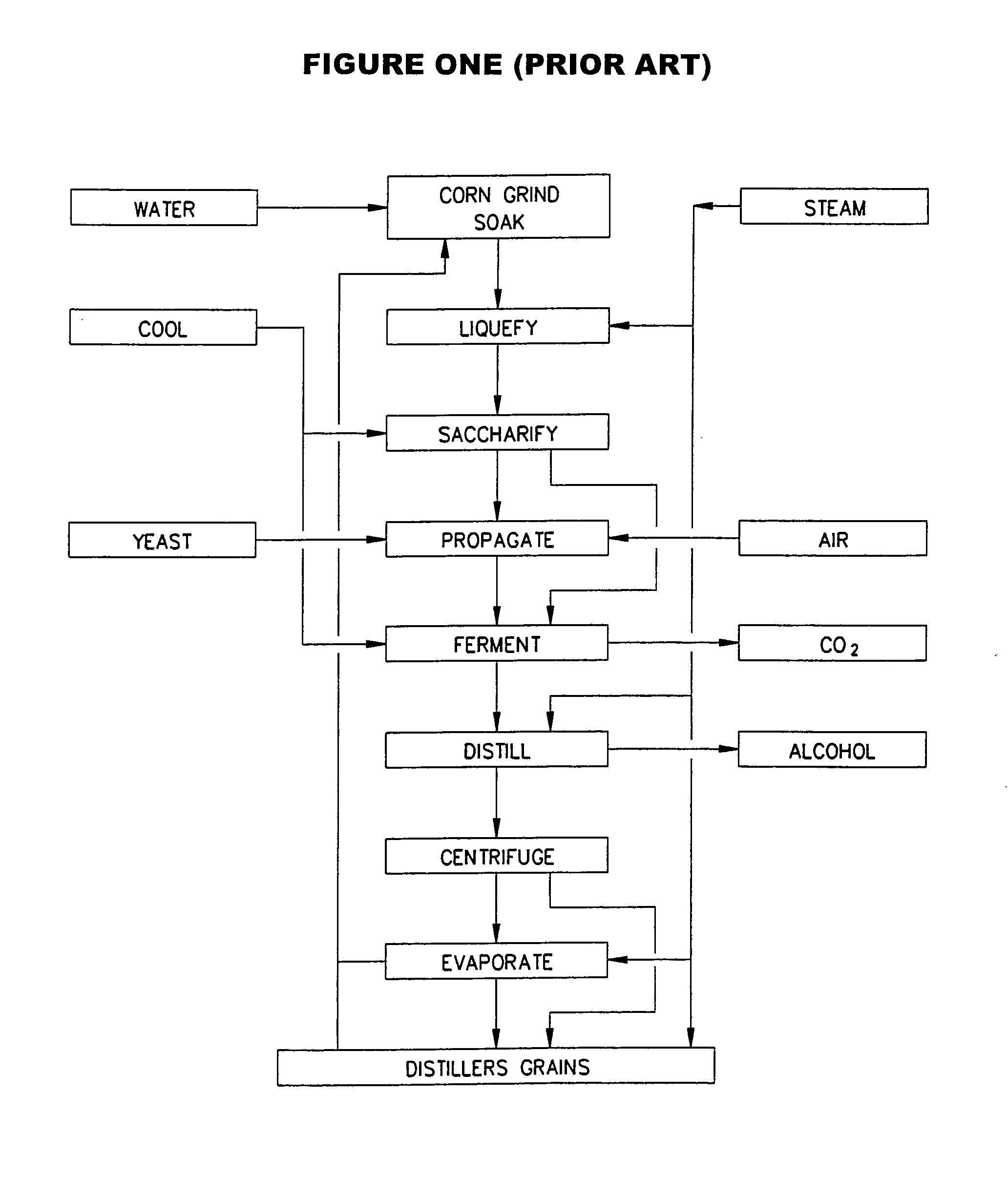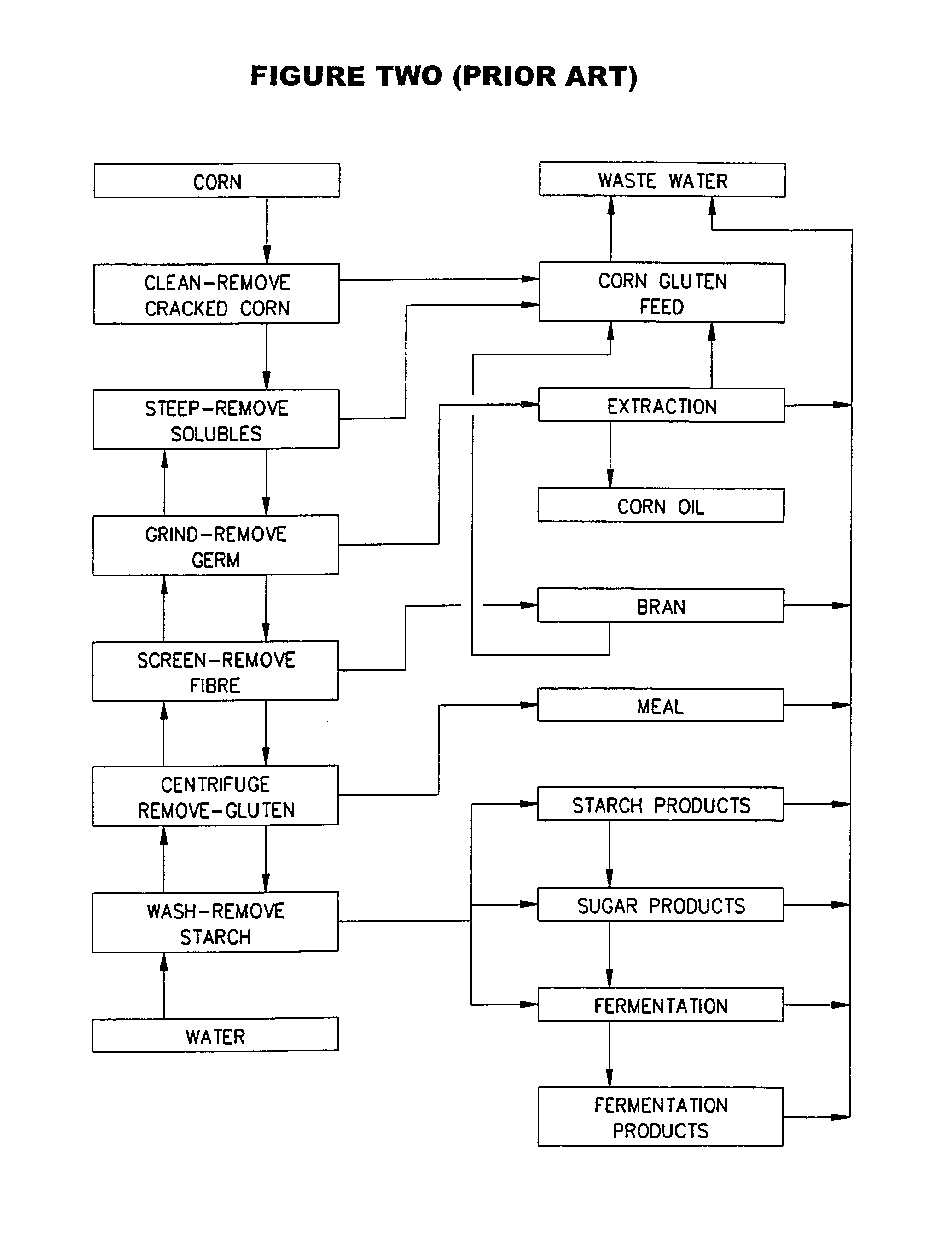Corn and fiber refining
a technology of corn and fiber, applied in the field of corn refining, can solve the problems that lignocellulose does not contribute to ethanol production, and achieve the effects of increasing the quantity of sugars that are fermented, increasing the yield of ethanol, and increasing the quantity of sugars
- Summary
- Abstract
- Description
- Claims
- Application Information
AI Technical Summary
Benefits of technology
Problems solved by technology
Method used
Image
Examples
Embodiment Construction
[0048]1. The Invention In General
[0049]The process of this invention refines corn, other cereal grains, and other plant materials into ethanol and other products. The process produces ethanol in yields significantly greater than those achieved in prior art processes. A preferred embodiment of the overall process is illustrated in simplified form in FIG. 4.
[0050]2. Raw Materials
[0051]The primary raw material for the process is a plant material containing starch and fiber. The preferred raw material is a fruit of a cereal grain. The most preferred raw material is corn kernels. The preferred corn kernels are United States grade number 2 yellow dent corn because of its large starch component and commercial availability. As discussed in detail above, corn kernels contain starch, protein, oil, and relatively small amounts of lignocellulose. If desired, the corn kernels are blended with the fruit of other cereal grains such as rice, wheat, barley, sorghum (milo), millets, oats, rye, and th...
PUM
| Property | Measurement | Unit |
|---|---|---|
| temperature | aaaaa | aaaaa |
| temperature | aaaaa | aaaaa |
| temperature | aaaaa | aaaaa |
Abstract
Description
Claims
Application Information
 Login to View More
Login to View More - R&D
- Intellectual Property
- Life Sciences
- Materials
- Tech Scout
- Unparalleled Data Quality
- Higher Quality Content
- 60% Fewer Hallucinations
Browse by: Latest US Patents, China's latest patents, Technical Efficacy Thesaurus, Application Domain, Technology Topic, Popular Technical Reports.
© 2025 PatSnap. All rights reserved.Legal|Privacy policy|Modern Slavery Act Transparency Statement|Sitemap|About US| Contact US: help@patsnap.com



